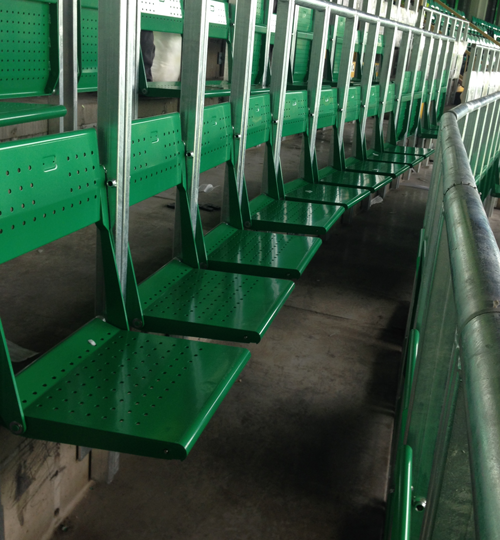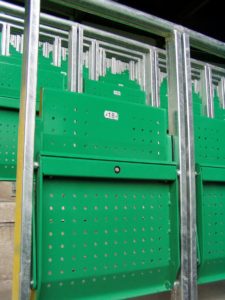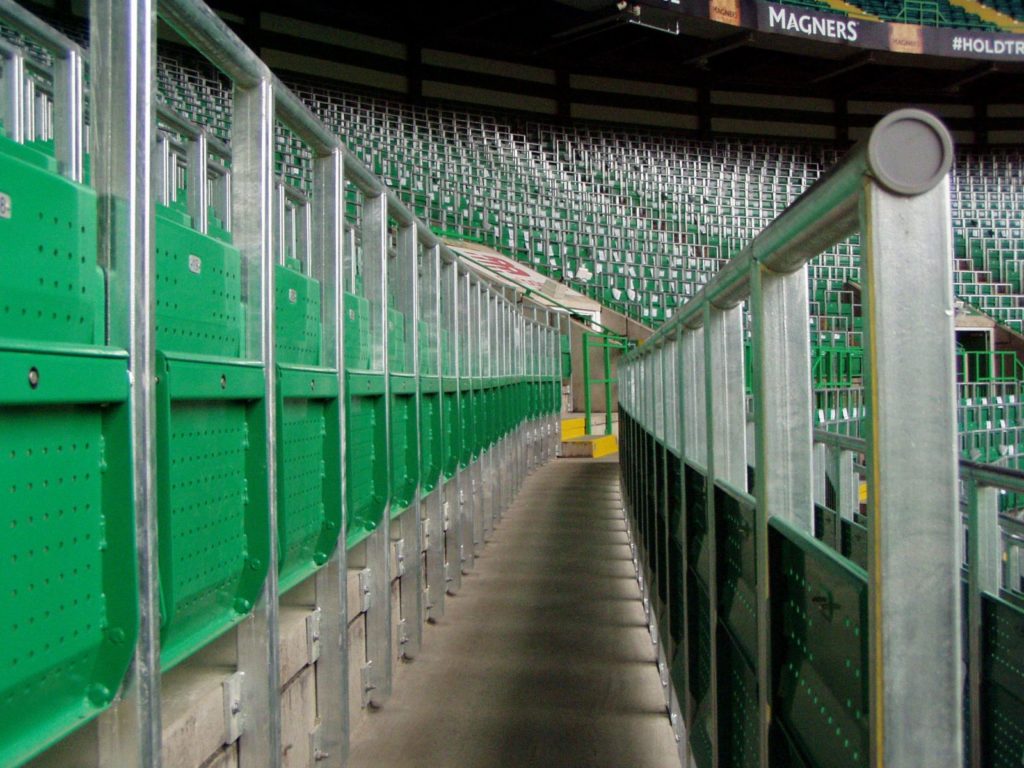Stadia spoke with Ferco managing director Michael Burnett about the installation of safe standing at Celtic Park in Glasgow
The installation of safe standing at Celtic Park is an important project for seating specialists Ferco, and could have significant implications for soccer stadia in other markets.
Celtic Park’s rail seating section must be an important project for Ferco.
It is. There’s nowhere else in the UK that has formally committed to allowing safe standing.
Did you have to alter your existing rail seating design?
Not really. In the product we already had, which had been used in Europe, there was no specific rail height, and different places used different heights – for reasons that we never entirely sure of. We settled on a height that we felt was right for the UK.

What features of Ferco’s design makes standing areas a safe proposition?
There is a provision under the recommendations in the Green Guide for rails used in areas which are approved for standing. Those rails are referred to as crush barriers, which has horrible connotations, but unfortunately they promote crushing because they’re not continuous, and they are often many rows apart. They used to put them maybe six rows apart, and because you had uncontrolled capacities within that area, you could actually have many more than six people in a straight line pushing against one rail, and the people at the front are crushed against the barrier.
 Our system is different. The rail seats are continuous from step to step, across the whole row width, and they’re also in every row. Because they tend to replace individual, numbered seats, and because spectators are given specific tickets, there can only be one person between each set of barriers.
Our system is different. The rail seats are continuous from step to step, across the whole row width, and they’re also in every row. Because they tend to replace individual, numbered seats, and because spectators are given specific tickets, there can only be one person between each set of barriers.
The Green Guide specifies what the crowd densities can be for both sitting and standing. For standing, it’s between 60% and 80% more people, which means that you’re still only a maximum of 1.8 people. One person can’t push another person so hard as to do them harm. Even if it was permitted that they could use the standing capacity, it would still be an awful lot safer.
They can also be locked up in an upright position. Is this important?
The primary reason for locking them in the upright position when they’re not in use is so that people don’t tip the seats down and then stand on them.
Have you experienced a lot of interest in the project from clubs in leagues where safe standing is not in use? The response after Celtic had their first game [with the rail seating section] was amazing – from the Premier League and the Championship, as well as from the fans. The whole social media thing was phenomenal, and as a result people were getting in touch asking how they could persuade their clubs to go down that path.

Are clubs in English soccer willing to consider safe standing?
I think they’re more than willing to entertain the idea. There are a number of the big clubs – probably more than half of Premier League clubs, and more than that in the Championship – that are interested. Arsenal can’t put any more in on a Saturday, neither can Chelsea or Manchester United – they’re full. All they’re doing is bowing to the wishes of their fans. In the Championship, stadia are not always full up, and if they think they can get more spectators in by allowing them to stand, then of course that’s something they’re happy to embrace.
Could you see there being a change in the legislation in the English Premier League?
At the end of the day, there isn’t – as I understand it – a need for change in the legislation because it states that the Secretary of State has the right to require certain grounds to be all-seater.
I’m sure there would still have to be a debate in parliament, but I’m sure it’s a fairly simple matter, and I would imagine that, by 2018, some Premier League clubs will be given the right to do trials.
Look out for more from Michael Burnett in the next issue of Stadia.
March 1, 2017





